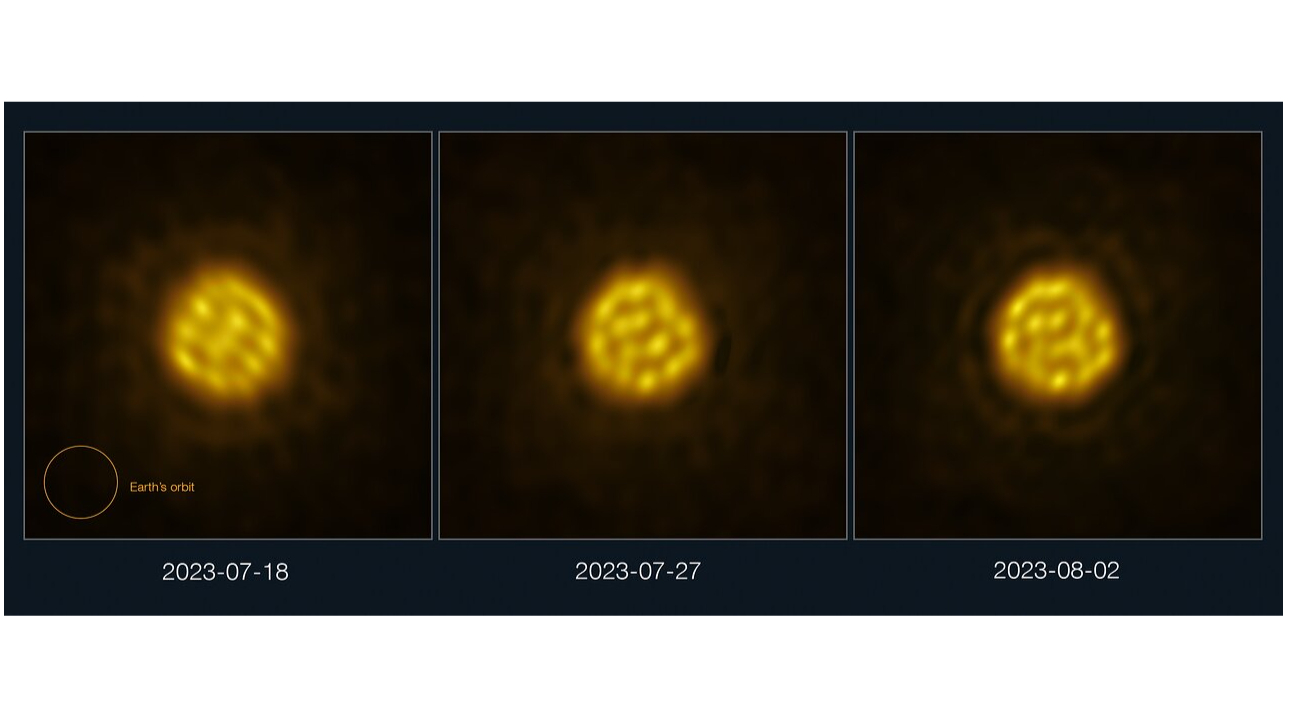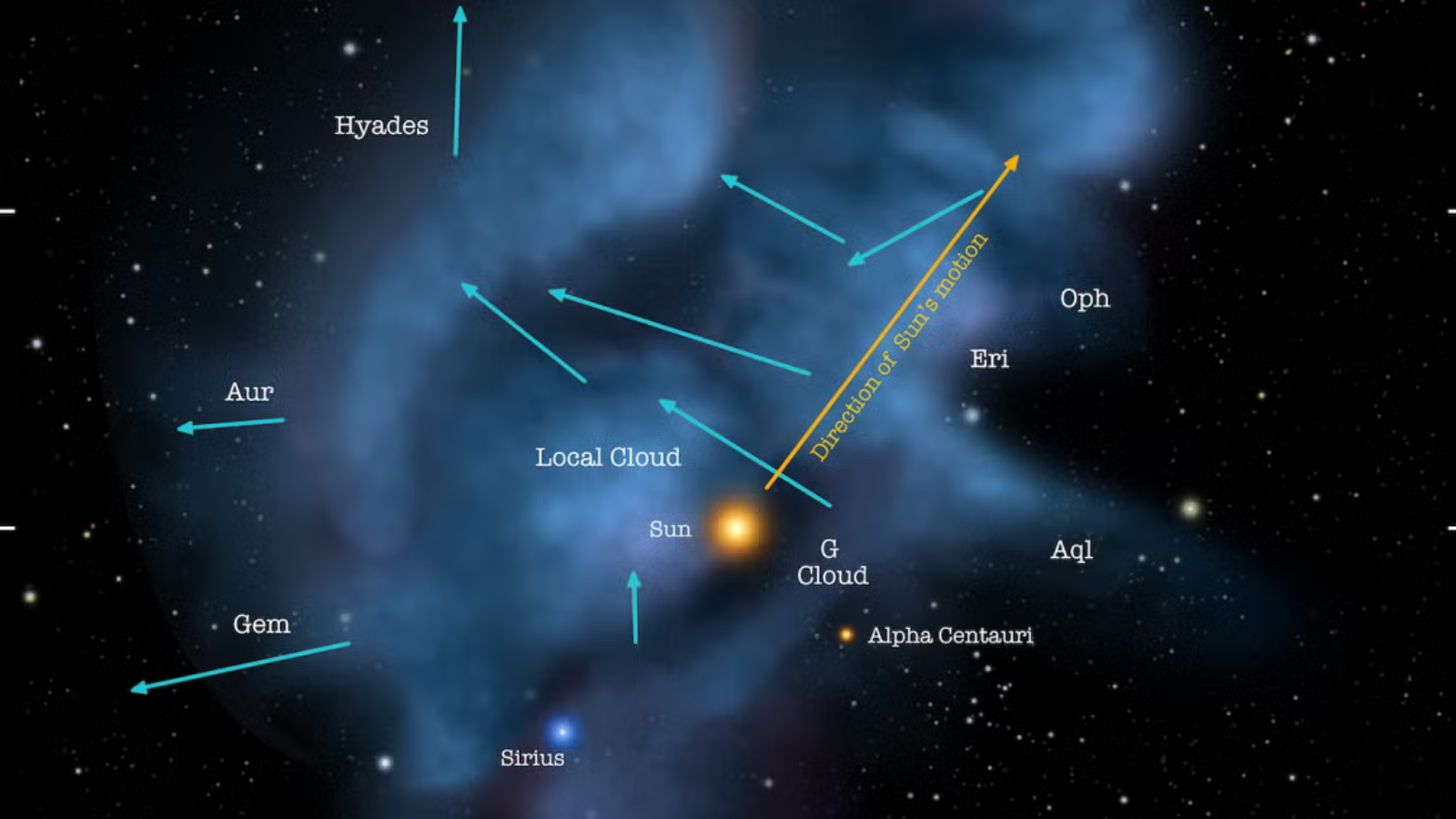The bubbling surface of a distant star was captured on video for the 1st time ever
'It is spectacular that we can now directly image the details on the surface of stars so far away.'
Astronomers have gotten the first-ever detailed views of turbulent activity in a star other than our own sun.
A time-lapse video released Wednesday (Sept. 11) shows enormous gas bubbles roiling on a nearby star called R Doradus, a red giant about 300 times bigger than our sun that lies roughly 180 light-years away, in the southern constellation Dorado. Like a boiling soup on a stovetop, the star's scorching material erupts on its surface in bubbles, which astronomers estimate swell to a whopping 75 times our sun's size.
"It is spectacular that we can now directly image the details on the surface of stars so far away," Behzad Bojnodi Arbab, a doctoral student at the Chalmers University of Technology in Sweden and a co-author of a new study about the observations, published Wednesday in the journal Nature, said in a statement. Thanks to the latest images, astronomers can now "observe physics that until now was mostly only observable in our sun," Arbab added.
The video is pieced together from the best-ever images of the star's chaotic surface, which were captured by a network of radio telescopes in Chile called the Atacama Large Millimeter/submillimeter Array, or ALMA for short. The images show the plasma bubbles, which are driven by heat rising from the star's core, crashing on its surface so violently that they appear to slightly deform the star.
Related: Meet ALMA: Amazing photos from the giant radio telescope array
"We had never expected the data to be of such high quality that we could see so many details of the convection on the stellar surface," study lead author Wouter Vlemmings, a professor at Chalmers University of Technology, said in the statement.
From the latest snapshots of R Doradus, which ALMA captured from early July to August of last year, Vlemmings and his colleagues estimate the star's plasma bubbles rise and fall on a one-month cycle, which is faster than the timeline followed by similar convective cells abundant on our sun's surface.
Breaking space news, the latest updates on rocket launches, skywatching events and more!
"We don't yet know what is the reason for the difference," said Vlemmings.
Though R Doradus is incredibly bloated, its mass is similar to that of our sun. So study team members suspect the star reflects how our sun will look in about five billion years, when it will enter its red giant phase by ballooning up to the point of swallowing Mercury and Venus.
"It seems that convection changes as a star gets older in ways that we don't yet understand," said Vlemmings.
Previous ALMA observations showed that R Doradus is spinning at least two orders of magnitude faster than expected for a red giant. In the new study, Vlemmings and his team ruled out the possibility that the high spin is an illusion created by the star's boiling surface, a hypothesis that was recently put forth by a different team of astronomers studying Betelgeuse, another red giant in the constellation Orion known to spin 100 times faster than expected.
Vlemmings and his colleagues argue that R Doradus' rotation rate is much longer than the one-month cycle they found its convective bubbles to operate in, thus ruling out the odds of telescopes being tricked by such a chance alignment of gas bubbles.

Sharmila Kuthunur is an independent space journalist based in Bengaluru, India. Her work has also appeared in Scientific American, Science, Astronomy and Live Science, among other publications. She holds a master's degree in journalism from Northeastern University in Boston.

